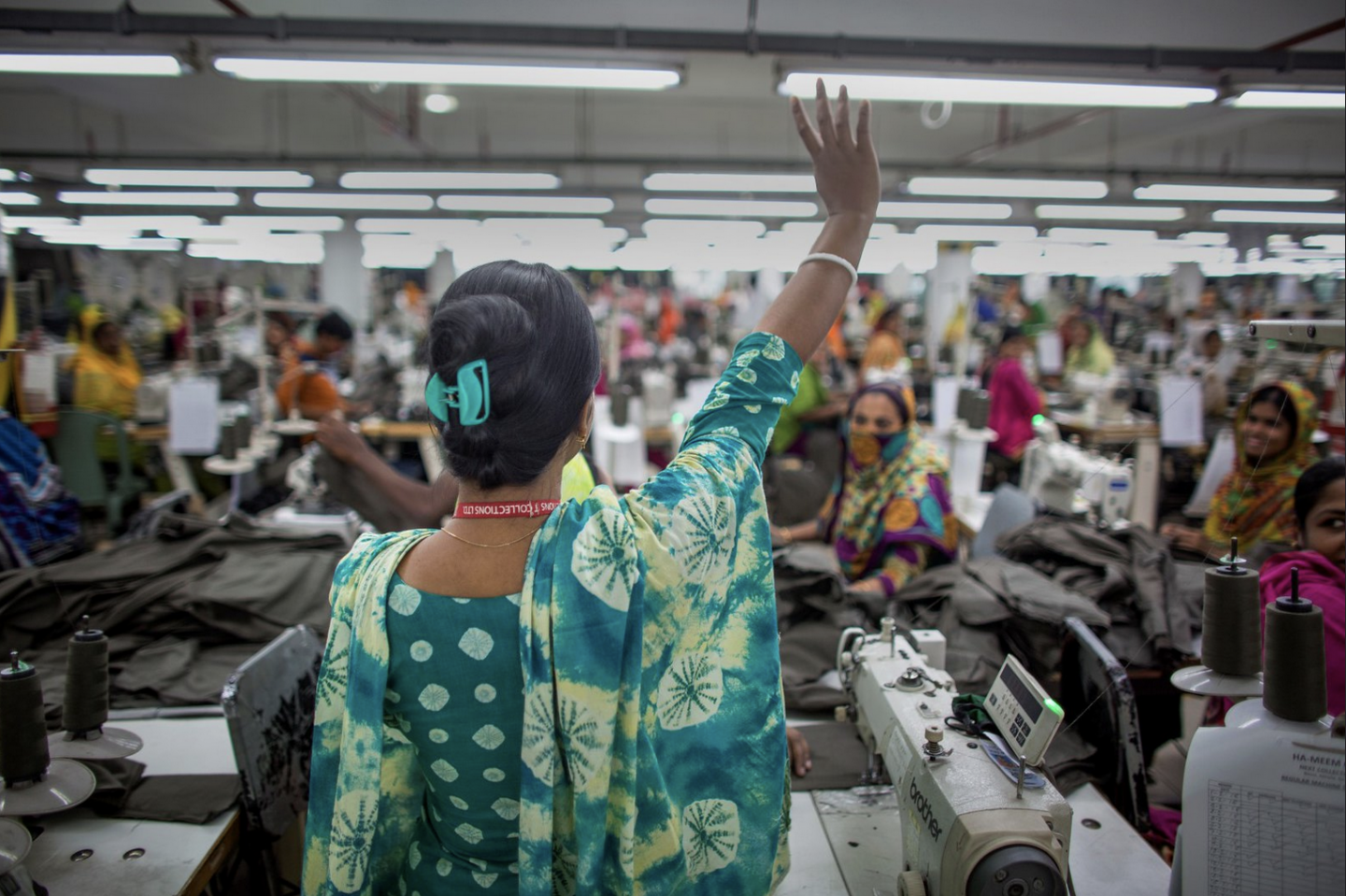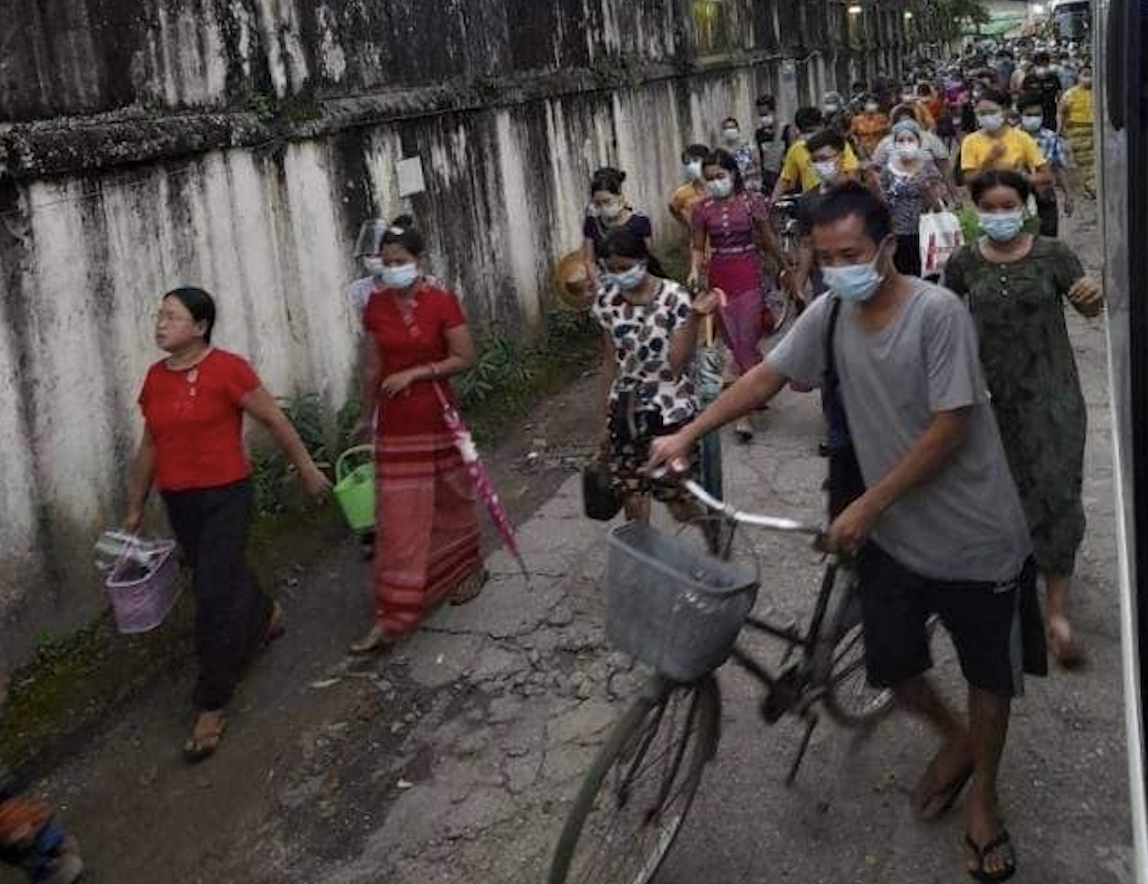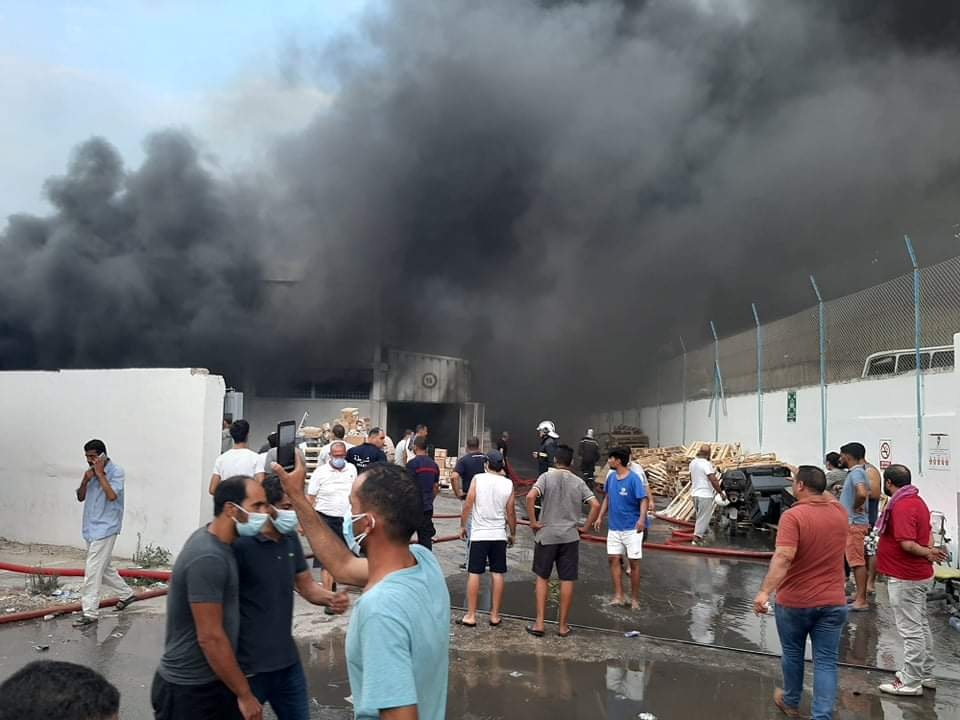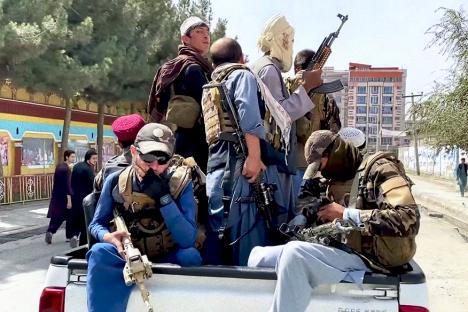Low-sodium salt prevents stroke
SSaSS presented in a Hot Line Session today at ESC Congress 2021
Peer-Reviewed PublicationSophia Antipolis, France – 29 Aug 2021: Replacing salt with a low-sodium alternative lowers the risk of stroke in people with high blood pressure or prior stroke, according to late breaking research presented in a Hot Line session today at ESC Congress 20211 and published in the New England Journal of Medicine2.
Both elevated sodium intake and low potassium intake are associated with high blood pressure and an increased risk of cardiovascular disease and premature death.3,4 Salt substitutes, which replace part of the sodium chloride in regular salt with potassium chloride, have been shown to lower blood pressure5 but their effects on heart disease, stroke, and death had been uncertain. In addition, there had been concerns about causing hyperkalaemia in people with chronic kidney disease leading to cardiac arrhythmias and sudden death.
The Salt Substitute and Stroke Study (SSaSS) compared the effect of reduced sodium salt substitute versus regular salt on stroke, cardiovascular events, mortality and clinical hyperkalaemia.6 SSaSS was an open, cluster-randomised, trial that enrolled participants between April 2014 and January 2015. Participants were adults with either previous stroke or age 60 years and above with poorly controlled blood pressure.7
The trial was conducted in 600 villages in rural areas of five provinces in China. Two counties within each province were chosen that represented the socioeconomic development level of rural counties in that province. Approximately 35 individuals were recruited from each village – for a total of 20,995 participants. Participants were cluster-randomised by village in a 1:1 ratio to provision of salt substitute or continued use of regular salt.
Participants in intervention villages were given free salt substitute (about 75% sodium chloride and 25% potassium chloride) as a replacement for regular salt and advised to use it for all cooking, seasoning and food preservation. They were also encouraged to use the salt replacement more sparingly than they previously used salt to maximise their sodium reduction. Sufficient salt substitute was provided to cover the needs of the entire household (about 20 g per person per day). Participants in control villages continued their usual habits.
The average age of participants was 65.4 years and 49.5% were female. Some 72.6% had a history of stroke and 88.4% had a history of hypertension.
During an average follow up of 4.74 years, more than 3,000 people had a stroke, more than 4,000 died and more than 5,000 had a major cardiovascular event. The risk of stroke was reduced with salt substitute compared to regular salt (29.14 versus 33.65 per 1,000 patient-years; rate ratio [RR] 0.86; 95% confidence interval [CI] 0.77–0.96; p=0.006).
Regarding secondary outcomes, major cardiovascular events (non-fatal stroke, non-fatal acute coronary syndrome, vascular death) were reduced with salt substitute (49.09 versus 56.29 per 1,000 patient-years; RR 0.87; 95% CI 0.80–0.94; p<0.001) as was total mortality (39.27 versus 44.61 per 1,000 patient-years; RR 0.88; 95% CI 0.82–0.95; p<0.001).
Regarding safety, there was no increased risk of serious adverse events attributed to clinical hyperkalaemia with salt substitute compared to regular salt (3.35 versus 3.30 per 1,000 patient years; RR 1.04; 95% CI 0.80–1.37; p=0.76). Neither were any other risks identified.
Principal investigator Professor Bruce Neal of the George Institute for Global Health, Sydney, Australia said: “This study provides clear evidence about an intervention that could be taken up very quickly at very low cost. A recent modelling study done for China projected that 365,000 strokes and 461,000 premature deaths could be avoided each year in China if salt substitute was proved to be effective.8 We have now showed that it is effective, and these are the benefits for China alone. Salt substitution could be used by billions more with even greater benefits.”
He added: “The trial result is particularly exciting because salt substitution is one of the few practical ways of achieving changes in the salt people eat. Other salt reduction interventions have struggled to achieve large and sustained impact.’’
‘’Importantly, salt substitute is very easy to manufacture and it is not expensive. A kilo of regular salt, which lasts for months, costs about US$1.08 in China. The price for a kilo of salt substitute is $1.62/kg,’’ he said. “It is primarily lower-income and more disadvantaged populations that add large amounts of salt during food preparation and cooking.9 This means that salt substitute has the potential to reduce health inequities related to cardiovascular disease.”
ENDS
Notes to editors
Authors: ESC Press Office
Mobile: +33 (0)7 85 31 20 36
Email: press@escardio.org
Follow us on Twitter @ESCardioNews
The hashtag for ESC Congress 2021 is #ESCCongress.
This press release accompanies both a presentation and an ESC press conference at ESC Congress 2021. It does not necessarily reflect the opinion of the European Society of Cardiology.
Funding: The study was supported by the National Health and Medical Research Council (APP1164206 and APP1049417) with the study salt substitute purchased from local manufacturers in each province for years 1, 2 and 5 but provided free of charge by Jiangsu Sinokone Technology Company Limited for years 3 to 4.
Disclosures: None.
References and notes
1SSaSS: Salt Substitute and Stroke Study into the effect of salt substitutes on cardiovascular events and death
2Tian M, et al. The effect of salt substitute on cardiovascular events and death (SSaSS). N Engl J Med. 10.1056/NEJMoa2105675
3Cogswell ME, Mugavero K, Bowman BA, Frieden TR. Dietary sodium and cardiovascular disease risk--measurement matters. N Engl J Med. 2016;375:580–586.
4Aburto NJ, Hanson S, Gutierrez H, et al. Effect of increased potassium intake on cardiovascular risk factors and disease: systematic review and meta-analyses. BMJ. 2013;346:f1378.
5Greer RC, Marklund M, Anderson CAM, et al. Potassium-enriched salt substitutes as a means to lower blood pressure. Hypertension. 2020;75:266–274.
6Neal B, Tian M, Li N, et al. Rationale, design, and baseline characteristics of the Salt Substitute and Stroke Study (SSaSS)-A large-scale cluster randomized controlled trial. Am Heart J. 2017;188:109–117.
7Poorly controlled blood pressure was defined as: systolic blood pressure ≥140 mmHg if on blood pressure lowering medication or systolic blood pressure ≥160 mmHg if not on blood pressure lowering medication.
8Marklund M, Singh G, Greer R, et al. Estimated population wide benefits and risks in China of lowering sodium through potassium enriched salt substitution: modelling study. BMJ. 2020;369:m824.
9Bhat S, Marklund M, Henry ME, et al. A systematic review of the sources of dietary salt around the world. Adv Nutr. 2020;11:677–686.
About the European Society of Cardiology
The European Society of Cardiology brings together health care professionals from more than 150 countries, working to advance cardiovascular medicine and help people lead longer, healthier lives.
About ESC Congress 2021 - The Digital Experience
It is the world’s largest gathering of cardiovascular professionals, disseminating ground-breaking science in a new digital format. Online each day – from 27 to 30 August. Explore the scientific programme. More information is available from the ESC Press Office at press@escardio.org.
JOURNAL
New England Journal of Medicine
ARTICLE TITLE
Tian M, et al. The effect of salt substitute on cardiovascular events and death (SSaSS)
ARTICLE PUBLICATION DATE
28-Aug-2021
Robot-assisted therapy can help treat stroke survivors, study finds
Peer-Reviewed PublicationIMAGE: RESEARCH LED BY UTHEALTH SHOWED POTENTIAL FOR THE EKSO 1.1TM EXOSKELETON TO CORRECT IMPAIRED WALKING PATTERNS ON A WEAK OR PARALYZED LEG, AND INCREASE ITS MOTOR COORDINATION. view more
CREDIT: PHOTO COURTESY OF FANGSHI ZHU, PHD/UTHEALTH
Exoskeleton-assisted rehabilitation can be beneficial in treating stroke survivors, according to researchers at The University of Texas Health Science Center at Houston (UTHealth).
The study was published in the Journal of Neural Engineering.
“Stroke is one of the leading causes of death in the United States and is a major cause of serious, long-term disability worldwide,” said Fangshi Zhu, PhD, postdoctoral research fellow in the Department of Physical Medicine and Rehabilitation with McGovern Medical School at UTHealth. “Post-stroke survivors suffer from neurological deficits and impairments that may cause several disabilities, like diminished mobility and basic activities of daily living.”
A critical step in post-stroke rehabilitation is the recovery of the gait-related motor functions caused by hemiparesis – mild or partial weakness on one side of the body – or hemiplegia – severe or complete loss of strength of paralysis. The conditions can include asymmetric step times and step length, slowed gait velocity, impaired joint and posture control, muscle weakness, abnormal muscle tone, and abnormal muscle activation patterns.
The current accepted methods of therapy can be taxing on both the patient and the therapists. According to Zhu, conventional gait rehabilitation therapies can be very labor intensive, and involve two to three therapists to guide affected limbs.
Researchers found the Ekso 1.1TM exoskeleton showed the potential to correct impaired walking patterns on a weak or paralyzed leg, and increase its motor coordination.
“We found that assistance from direct robot usage had a significant immediate impact on the stroke subjects’ lower-limb muscle synergy pattern. This demonstrated the possibility of using a powered exoskeleton to augment impaired gait and the potential for helping stroke survivors regain their normal walking ability in a long-term exoskeleton-assisted rehabilitation program,” Zhu said. “Recent advances in robot-assisted rehabilitation allow precise and automated training. Compared to conventional therapy, the use of a robot enables longer training time, more precisely controlled forces delivery in repetitive exercises, and kinematics and kinetics monitoring during training.”
Zhu and his team collected data from 11 able-bodied subjects and 10 individuals with chronic post-stroke hemiplegia or hemiparesis.
In the first phase of the study, each subject walked continuously for 3-5 minutes on a treadmill at a self-selected, comfortable speed determined in a practice walk prior to data collection. During the walk, subjects wore gravity-compensating harnesses connected to an over-head body weight suspension frame to ensure safety and eliminate a potential loss of balance.
The second stage of the study consisted of 10 to 15 sessions of exoskeleton-assisted walk training over a course of three to four weeks. In each session, patients walked over-ground with an Ekso 1.1TM exoskeleton for up to 50 minutes while guided by a physical therapist. The subjects were encouraged to walk continuously as much as possible, but short breaks were allowed.
“This study gave us some critical insight into how a powered exoskeleton affects the stroke subjects’ neuromuscular coordination during gait and demonstrated the potential to use muscle synergy as a method to evaluate the effect of the exoskeleton training,” Zhu said. “Acute and chronic hemiplegic and hemiparesis patients who suffer from severe asymmetric gait coordination, serious foot drop, and reduced joint range of movement could benefit from the Ekso assistance.”
Contributing authors from the Department of Physical Medicine and Rehabilitation at McGovern Medical School at UTHealth include Taimoor Afzal, PhD, postdoctoral research fellow; Shuo-Hsiu Chang, PhD, PT, assistant professor; and Gerard E. Francisco, MD, professor and Wulfe Family Chair in Physical Medicine and Rehabilitation and chief medical officer at TIRR Memorial Hermann. Contributors from the Center for Wearable Exoskeletons, NeuroRecovery Research Center at TIRR Memorial Hermann are Marcie Kern, PT; and Erin Fowkes, PT. Jose-Luis Contreras-Vidal, PhD, from the Department of Electrical and Computer Engineering at the University of Houston also contributed.
JOURNAL
Journal of Neural Engineering
ARTICLE TITLE
Effects of an exoskeleton-assisted gait training on post-stroke lower-limb muscle coordination
ARTICLE PUBLICATION DATE
4-Jun-2021
Flu jab after heart attack should become standard care
IAMI trial presented in a Hot Line Session today at ESC Congress 2021
Reports and ProceedingsSophia Antipolis, France – 30 Aug 2021: Influenza vaccination reduces the risk of all-cause death, myocardial infarction, or stent thrombosis at 12 months in hospitalised patients with myocardial infarction or high-risk coronary disease, according to late breaking research presented in a Hot Line session today at ESC Congress 2021.1
During influenza epidemics more people die from cardiovascular causes than during non-epidemic periods.2 Observational studies have suggested a protective effect from influenza vaccination on cardiovascular events, and single-centre randomised trials have supported these findings.3-5 Influenza vaccination is recommended for patients with heart disease6,7 but is not part of standard hospital care following an acute myocardial infarction.
The IAMI trial was the largest randomised trial to date to evaluate whether influenza vaccination improves outcomes following myocardial infarction or percutaneous coronary intervention in high-risk patients with coronary artery disease. The trial was conducted at 30 hospitals in eight countries (Sweden, Denmark, Norway, Latvia, the UK, Czech Republic, Bangladesh and Australia) over four influenza seasons spanning October 2016 through February 2020.
Participants were randomly assigned in a 1:1 ratio to receive either the influenza vaccine or placebo within 72 hours of an invasive coronary procedure or hospitalisation. The primary endpoint was a composite of all-cause death, myocardial infarction, or stent thrombosis at 12 months. A hierarchical testing strategy was used for the key secondary outcomes of all-cause death, cardiovascular death, myocardial infarction, and stent thrombosis.
The trial was halted prematurely on 7 April 2020 by the data safety and monitoring board due to the COVID-19 pandemic after the enrolment of 2,571 patients (58% of the target). The average age of participants was 60 years and 18% were women.
The primary composite endpoint occurred in 67 patients (5.3%) in the vaccine group and 91 (7.2%) in the placebo group (hazard ratio [HR] 0.72; 95% confidence interval [CI] 0.52–0.99; p=0.040). Regarding secondary endpoints, death from any cause occurred in 37 patients (2.9%) in the vaccine group and 61 (4.9%) in the placebo group (HR 0.59; 95% CI 0.39–0.89, p=0.010). Rates of cardiovascular death were 2.7% and 4.5%, respectively (HR 0.59; 95% CI 0.39–0.90, p=0.014). There was no difference between groups in the rate of myocardial infarction, which occurred in 25 (2.0%) and 29 (2.4%) patients in the vaccine and placebo groups, respectively (HR 0.86; 95% CI 0.50–1.46; p=0.57).
Serious adverse events were rare and of similar type and incidence in both groups. injection site reactions like pain, redness, swelling, and hardening were reported significantly more often in patients assigned to influenza vaccine.
Principal investigator Professor Ole Fröbert of Örebro University, Sweden said: “The IAMI trial found that in patients with myocardial infarction or high-risk coronary disease, early influenza vaccination resulted in a lower risk of the composite of all-cause death, myocardial infarction or stent thrombosis at 12 months compared with placebo. Our findings suggest that influenza vaccination should be considered as part of in-hospital treatment after myocardial infarction.”
ENDS
Notes to editors
Authors: ESC Press Office
Mobile: +33 (0)7 85 31 20 36
Email: press@escardio.org
Follow us on Twitter @ESCardioNews
The hashtag for ESC Congress 2021 is #ESCCongress.
This press release accompanies both a presentation and an ESC press conference at ESC Congress 2021. It does not necessarily reflect the opinion of the European Society of Cardiology.
Funding: Funded by a grant from the Swedish Heart-Lung Foundation (project number 20150284), the Danish Heart Foundation (grant number 16-R107-A6596–22958), ALF Grants, and Nyckelfonden, Region Örebro, Sweden and by an unrestricted grant from Sanofi Pasteur, Lyon, France, who also provided the study vaccine. The authors are solely responsible for the design and implementation of this study, all study analyses, the drafting and editing of the paper, and its final content.
Disclosures: OF received an unrestricted grant from Sanofi Pasteur to conduct the study.
References and notes
1IAMI: Influenza Vaccination after Myocardial Infarction randomised trial.
2Collins SD. Excess mortality from causes other than influenza and pneumonia during influenza epidemic. Public Health Rep. 1932;47:2159–2179.
3Gurfinkel EP, Leon de la Fuente R, Mendiz O, et al. Flu vaccination in acute coronary syndromes and planned percutaneous coronary interventions (FLUVACS) Study. Eur Heart J. 2004;25:25–31.
4Ciszewski A, Bilinska ZT, Brydak LB, et al. Influenza vaccination in secondary prevention from coronary ischaemic events in coronary artery disease: FLUCAD study. Eur Heart J. 2008;29:1350–1358.
5Phrommintikul A, Kuanprasert S, Wongcharoen W, et al. Influenza vaccination reduces cardiovascular events in patients with acute coronary syndrome. Eur Heart J. 2011;32:1730–1735.
6Knuuti J, Wijns W, Saraste A, et al. 2019 ESC Guidelines for the diagnosis and management of chronic coronary syndromes. Eur Heart J. 2020;41:407–477.
7Davis MM, Taubert K, Benin AL, et al. Influenza vaccination as secondary prevention for cardiovascular disease: a science advisory from the American Heart Association/American College of Cardiology. J Am Coll Cardiol. 2006;48:1498–1502.
About the European Society of Cardiology
The European Society of Cardiology brings together health care professionals from more than 150 countries, working to advance cardiovascular medicine and help people lead longer, healthier lives.
About ESC Congress 2021 - The Digital Experience
It is the world’s largest gathering of cardiovascular professionals, disseminating ground-breaking science in a new digital format. Online each day – from 27 to 30 August. Explore the scientific programme. More information is available from the ESC Press Office at press@escardio.org.







